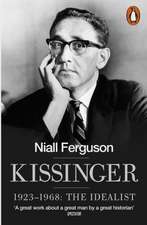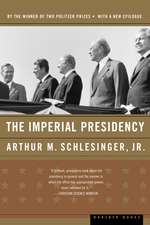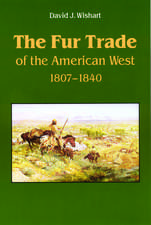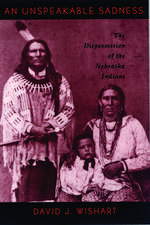The Last Days of the Rainbelt
Autor David J. Wisharten Limba Engleză Hardback – noi 2013
David J. Wishart’s The Last Days of the Rainbelt is the sobering tale of the rapid rise and decline of the settlement of the western Great Plains. History finds its voice in interviews with elderly residents of the region by Civil Works Administration employees in 1933 and 1934. Evidence similarly emerges from land records, climate reports, census records, and diaries, as Wishart deftly tracks the expansion of westward settlement across the central plains and into the Rainbelt. Through an examination of migration patterns, land laws, town-building, and agricultural practices, Wishart re-creates the often-difficult life of settlers in a semiarid region who undertook the daunting task of adapting to a new environment. His book brings this era of American settlement and failure on the western Great Plains fully into the scope of historical memory.
Preț: 164.35 lei
Nou
Puncte Express: 247
Preț estimativ în valută:
31.45€ • 32.72$ • 25.97£
31.45€ • 32.72$ • 25.97£
Carte disponibilă
Livrare economică 22 martie-05 aprilie
Preluare comenzi: 021 569.72.76
Specificații
ISBN-13: 9780803246188
ISBN-10: 0803246188
Pagini: 224
Ilustrații: 16 illustrations, 19 maps, 10 graphs
Dimensiuni: 152 x 229 x 15 mm
Greutate: 0.49 kg
Editura: Bison Original
Colecția Bison Books
Locul publicării:United States
ISBN-10: 0803246188
Pagini: 224
Ilustrații: 16 illustrations, 19 maps, 10 graphs
Dimensiuni: 152 x 229 x 15 mm
Greutate: 0.49 kg
Editura: Bison Original
Colecția Bison Books
Locul publicării:United States
Notă biografică
David J. Wishart is a professor of geography at the University of Nebraska–Lincoln. He is the editor of the Encyclopedia of the Great Plains and Encyclopedia of the Great Plains Indians and the author of An Unspeakable Sadness: The Dispossession of the Nebraska Indians, all available from the University of Nebraska Press.
Cuprins
Acknowledgments
Introduction: A Ruined Land
Chapter 1. The Approach from the East, 1854-1885
Chapter 2. Into the Rainbelt, 1886-1890
Chapter 3. Life in the Rainbelt, circa 1890
Chapter 4. The Last Days of the Rainbelt, 1890-1896
Epilogue: After the Rainbelt
Notes
Bibliography
Index
Introduction: A Ruined Land
Chapter 1. The Approach from the East, 1854-1885
Chapter 2. Into the Rainbelt, 1886-1890
Chapter 3. Life in the Rainbelt, circa 1890
Chapter 4. The Last Days of the Rainbelt, 1890-1896
Epilogue: After the Rainbelt
Notes
Bibliography
Index
Recenzii
"The Last Days of the Rainbelt offers countless insights into frontier settlement."—Environmental History
"By combining previously overlooked archival material with an informed understanding of the region, Wishart makes an important time and place come alive."—James R. Shortridge, Kansas History
"Wishart has constructed an account that, page for page, may provide as good a portrait of the region as those produced by authors such as Walter Webb, Donald Worster, or Mari Sandoz. Thanks to scholars such as David Wishart, this volume also shows that the New Deal is the gift that keeps on giving."—Richard D. Loosbrock, Nebraska History
"[The Last Days of the Rainbelt] is highly useful, well written, and an important addition to Great Plains historiography."—Pamela Riney-Kehrberg, Western Historical Quarterly
"Wishart's sobering moral is clear. The parable of the Rainbelt reveals a great deal about the human capacity to misunderstand the environment and our role within it. We also need to heed the past as we contemplate the future, especially in the High Plains, and make these historical geographies more legible to twenty-first-century residents of the region. Wishart's fine book is a reminder of how that is done."—William Wyckoff, AAG Review of Books
"The Last Days of the Rainbelt will appeal to many whose interests lay in the Great Plains (i.e., the Rainbelt) whether the interest is limited to Nebraska, Kansas, and Colorado or to the Great Plains region as a whole."—Brad Tennant, Middle West Review
"Wishart, who clearly has zeal for the subject, has skillfully fashioned the results of his research into a narrative that will appeal both to students of the era and to lovers of American western lore."—Barbara Scott, Foreword Reviews
























